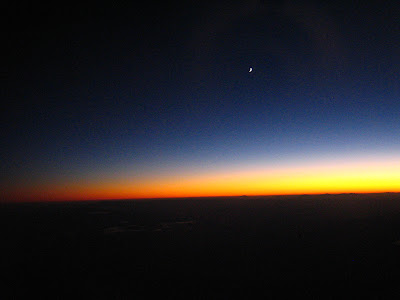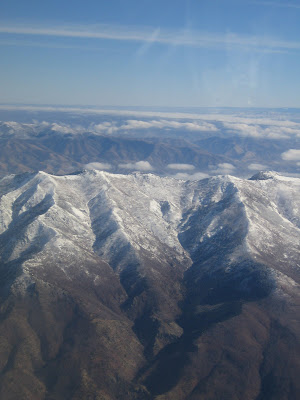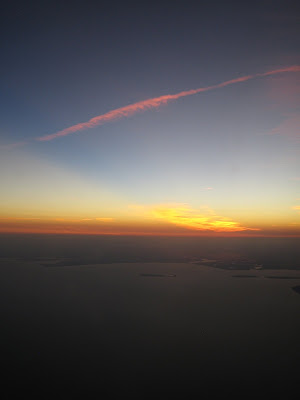10 Photo Tips: In-Flight PhotographyI think one of my favorite things to do in taking photos is to take them out the window of airplanes while on trips. You can get some wonderful shots of the sky, sun, ground, cities during the day and the moon and lights at night.
Here are a few tips to get some great shots out of those rare flights.
Tip #1 - Preparation
Reserve your seat in advance. Get the window seat. People tend not to like you leaning over them to get up against the window to take pictures. Also, try to be in front of the wing if at all possible. This will extend your photo range and reduce any air disturbances from the jet wash.
Tip #2 - PreparationHave your camera out or easily available to you. If you have a small case for your DSLR or full size camera, think about taking that instead of a full case. It will fit under your seat easier and if needed pack extras in your main luggage.
Tip #3 - PreparationBring a small cloth, or napkin with you. Clean off the window as much as possible so you can reduce the spots (they usually aren't very clean). Also, turn out all the overhead lighting and/or bring a coat or jacket with you that you can use as a light shield to reduce any glare of the window.
Tip #4 - Photo OpsUnfortunately, an airplane isn't standing still in the air. Remember to use a higher speed setting to reduce blur. (On my Canon Rebel XTi I generally use Tv 1/200 on ISO 800 or 1600). I generally stick with the shorter 18-55mm lens. A telephoto lens is difficult to handle in a small space, and is much harder to get stabilized, focused, and un-blurred shots.
Tip #5 - Photo OpsTake-offs are great opportunities for photos of cities and closer to ground images. Have your camera ready to go for just after the plane takes off. (You can get some fun shots of airplanes while taxiing, and get your settings adjusted).
Tip #6 - Photo OpsJust after take-off, if it is a cloudy day, wait for the airplane to break through the cloud layer. If its a morning or evening flight you can usually get some really good sunrise or sunset photos.
Tip #7 - Photo OpsTake lots of photos or use the continuous shot feature on your camera. Most shots are close to a once in a lifetime opportunity that you wont be able to replicate later. (This is easier with digital cameras, just delete them later when you're on the ground.) You will have a better chance to get a clean shot when you can pick the best of 3 (or 5).
Tip #8 - Night Photo OpsNight and dark photos are especially tricky. More so when you add in movement and vibration. It definitely helps if you have a steady hand (no room for a tripod, but a small monopod might help.) Play with extending your exposure time and lower the ISO to 100 or 200, if not lower. If your photo is a little dark, remember you can probably lighten it up in Photoshop later. This will help to get smaller details cleaner.
Tip #9 - Night Photo OpsNight shots can be very rewarding. Sunsets can create beautiful vibrant colors and lighting features that you can capture. The moon as well can cast an immense amount of light on clouds if it's after sunset. The moon and stars are even brighter when flying at 30,000' as you are above a lot of atmosphere that you would normally have to shoot through. Big cities are great at night with all the lights.
Tip #10 - SafetyTaking photographs in a commercial airline is a very cramped business. Try not to bother the person sitting next to you (maybe even let them look outside once in a while). Be careful with your equipment, there isn't a lot of room available for storage under the seat in front of you (don't kick the camera). If you are taking pictures out the window, remember turbulence can happen. Don't let your camera hit the window, or your face, if a sudden jolt hits (leave your body semi-loose and flexible - be a human shock absorber).
Remember, have fun with your shots. I certainly don't get to fly enough and I like to take every opportunity I can when I do to get great photos.
Some of my flight shots:
 Day-Night Border over Cascade Mountains
Day-Night Border over Cascade Mountains

Sunrise over Seattle
 Sunrise over Seattle Weather
Sunrise over Seattle Weather

Fire Night (One of my favorites)

Moon Over Hole

Rocky Mountains, Montana

Sunset over Houston, TX




